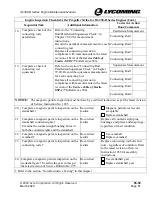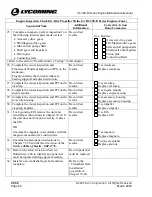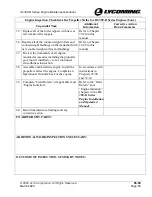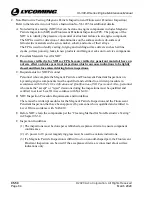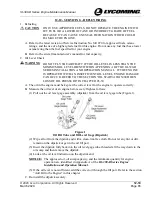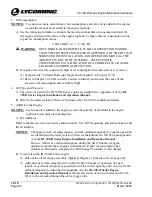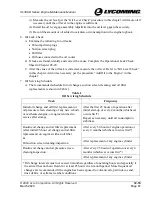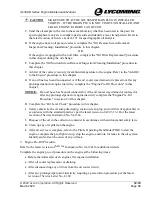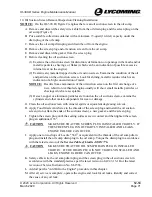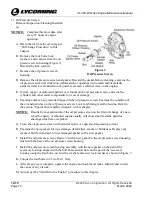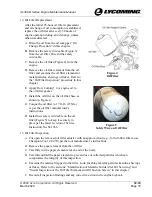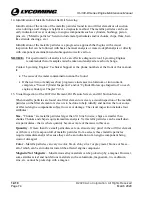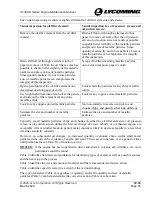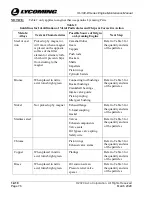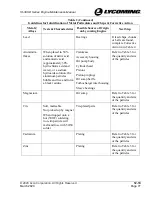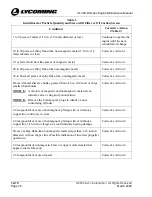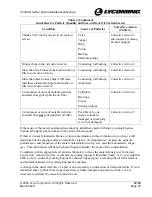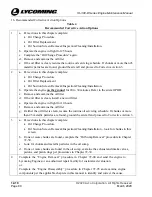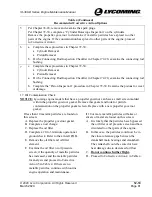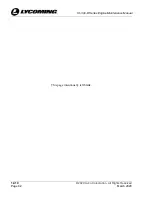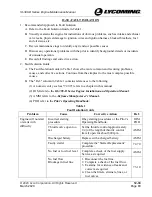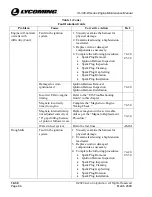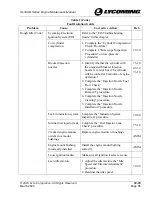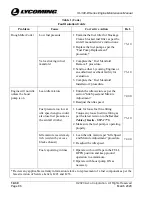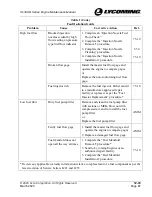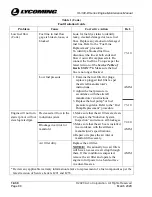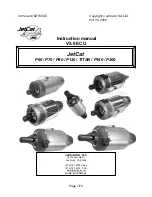
IO-390-D Series Engine Maintenance Manual
12-10
© 2020 Avco Corporation. All Rights Reserved
Page 74
March 2020
IO-390-D Series Engine Maintenance Manual
14.
Identification of Metallic Solids After Oil Servicing
Identification of the nature of the metallic particles found in an oil filter element or oil suction
screen during an oil change is helpful as a diagnostic method. The metallic particles can be an
early indication of wear or damage to engine components such as cylinders, bushings, piston
pins, etc. (“Metallic particles” herein include metal particulates and/or chunks, chips, flake, hair-
like strands, shavings, etc.)
Identification of the metallic particles is a progressive approach that begins with a visual
inspection that can be followed with basic chemical analysis or more in-depth analysis or directly
with component examination and subsequent corrective action.
NOTICE:
For spectrometric oil analysis to be an effective diagnostic tool, Lycoming Engines
recommends that oil samples must be taken and analyzed at each oil change.
Contact Lycoming Engines’ Technical Support at the phone numbers at the front of this manual,
if:
•
The cause of the metal contamination cannot be found
•
If the next two oil analyses show progressive increases in aluminum or iron content,
complete a “Visual Cylinder Inspection” and/or “Cylinder Borescope Inspection” on each
engine cylinder per Chapter 72-30.
15.
Visual Inspection of the Oil Filter Element, Oil Pressure Screen, and Oil Suction Screen
When metallic particles are found on a filter element or screen, a visual inspection of the metallic
particles on the filter element or screen is to be done to help identify and narrow the root source
of affected engine components subject to wear or damage. The visual inspection includes four
attributes:
Size
- “Chunks” are metallic particles larger than 3/16-inch in size; chips are smaller than
chunks. Chunks and chips require immediate analysis. Yet metallic particles can be small dust-
size particulates - that is where quantity becomes more of the issue in this case.
Quantity
– If more than five small particulates are on almost every panel in the oil filter element
or if there is a 1/4 teaspoon full of metallic particles from a screen, these metallic particles
require immediate analysis because they can be an indication of an engine component being
worn or damaged.
Color
– Metallic particles can vary in color: black, shiny silver or gray metal, bronze or brass –
all of which can be an indicator toward the affected engine component.
Magnetic/Not Magnetic
– Most ferrous alloy materials can be picked up by a magnet. However,
some stainless steel and non-ferrous materials such as aluminum, magnesium, tin, cadmium,
zinc, etc. cannot be picked up with a magnet.


